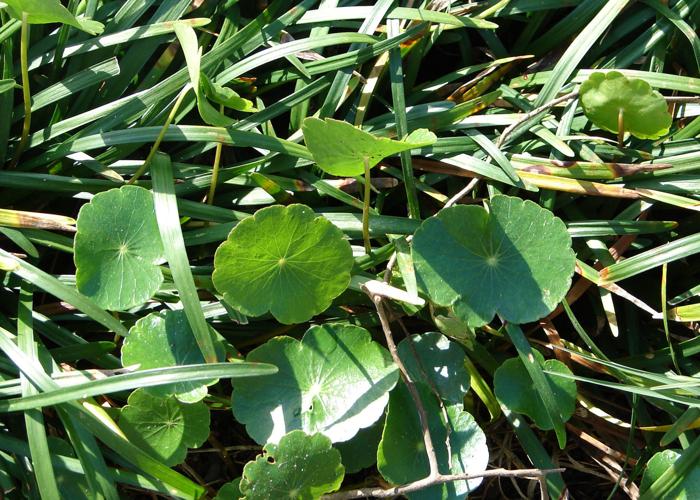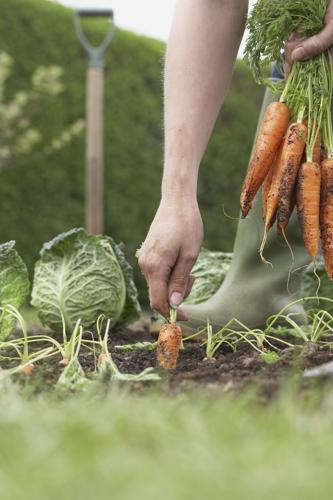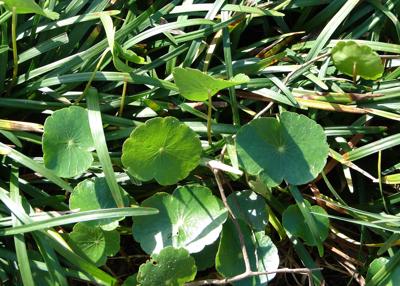My front and backyards were planted with St. Augustinegrass sod squares last year. Even though weed control measures were done before the grass was planted, dollarweed and other undesirable types of vegetation are creeping up all over the place. In addition, the grass doesn't look too healthy. I know it is not the right time to apply weed and feed, but should I be doing something else to curb the weeds and help strengthen the grass? — Burt Campbell
St. Augustinegrass stops growing and goes partially dormant this time of the year, so you shouldn't expect it to be looking its best now or growing well. It will not look any better (and may even turn brown if it gets really cold) until it begins to grow again in late March/April. So, given the season, this is not the best time to judge how healthy it is.
As to helping to strengthen the grass, there is really nothing you can do now. However, be sure to fertilize your lawns in late March or early April to stimulate vigorous new growth.
The cool-season weeds, however, including dollarweed, are in active growth now. This is an appropriate time to apply lawn weed killers to deal with them. Treat the lawn with the herbicide Atrazine twice following label directions. This can be done anytime this month or next month during mild spells.
I have a camellia bush that has a white powdery substance all over the leaves. What can I spray on it to get rid of it and keep it from coming back? — Joan Jenson
The problem is an insect called tea scale. The tea scale insects tend to congregate on the underside of the leaves, but they may also appear on the upper surface if the infestation is heavy. Several applications of a horticultural oil spray, such as Volck Oil, All Seasons Spray Oil or Year Round Spray Oil to name a few brands, should do the trick. Make sure you get under the leaves thoroughly when you spray.
Systemic insecticides are another option for controlling scale. These insecticides are applied to the roots. The plant absorbs it, the insecticides get into the plant’s circulatory system and, eventually, into the sap. When the scale insects feed on the sap, they ingest the toxic insecticide and are killed.
Imidacloprid (Bayer Advanced Tree and Shrub Insect Control, Bonide Annual Tree & Shrub Insect Control Concentrate, Ferti-lome Tree & Shrub Systemic Insect Drench and other brands) and dinotefuran (Green Light Tree and Shrub Insect Control with Safari and other brands) are systemic insecticides that are effective against scale on ornamental plants.
I harvested a nice cauliflower from my garden bed yesterday. I'm just curious about the reddish tint I see on the curd. I have a few others that are a bit smaller that also show the red tint, and others right next to them that are perfectly white. Is this anything I should be concerned about? — Keith Anderson
This can happen when the head is exposed to light during development. It is harmless and does not affect the flavor or quality of the cauliflower.
To reduce pigments in the head, you can pull the largest leaves up over the head when it is about the size of a silver dollar and fasten the leaves with a clothespin. Keep the head covered from the sun, checking it occasionally, until you are ready to harvest. This is called blanching and is commonly done with cauliflower because we prefer the heads to be white.
Garden tips

Cabbage and carrots are among the cool-season vegetables to be planted now.
PLANT NOW: Vegetables to plant in January include beets, broccoli, cabbage, carrots, cauliflower, Chinese cabbage, collards, kale, kohlrabi, lettuce, mustard, radishes, shallots, snow peas, spinach, Swiss chard and turnips. Plant seeds of tomatoes, peppers and eggplants in greenhouses or under lights indoors in late January to produce transplants to be put out in March.
PESTICIDES 101: Only use garden pesticides when the pest has been properly identified and pesticides are absolutely necessary. There is no need to spray an insecticide, for instance, every time you see a bug or minor damage. When a pesticide is recommended, always ask for the least toxic product that will do the job.
WARM THE WATER: During cold of winter, the water coming out of the tap can be decidedly chilly. When filling up your watering can for indoor plants, don’t just turn on the cold-water tap. Turn on both cold and hot water and adjust the temperature of the water coming out of the faucet until it feels tepid or barely warm. This is healthier for tropical houseplants and will prevent the spotting of African violet foliage.
SLOW TIME: Petunias, snapdragons and other cool-season bedding plants may bloom less during the mid-winter period but should pick up again in the late winter and early spring. If the foliage color is a good deep green and the plants seem to be growing well, you shouldn’t need to fertilize now.
Garden columnist Dan Gill answers readers' questions each week. To send a question, email Gill at dgill@agcenter.lsu.edu.



